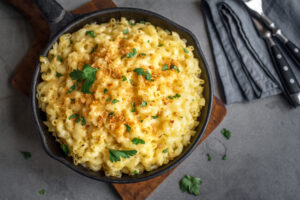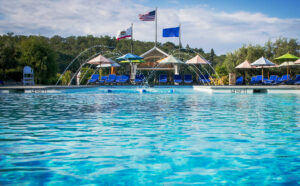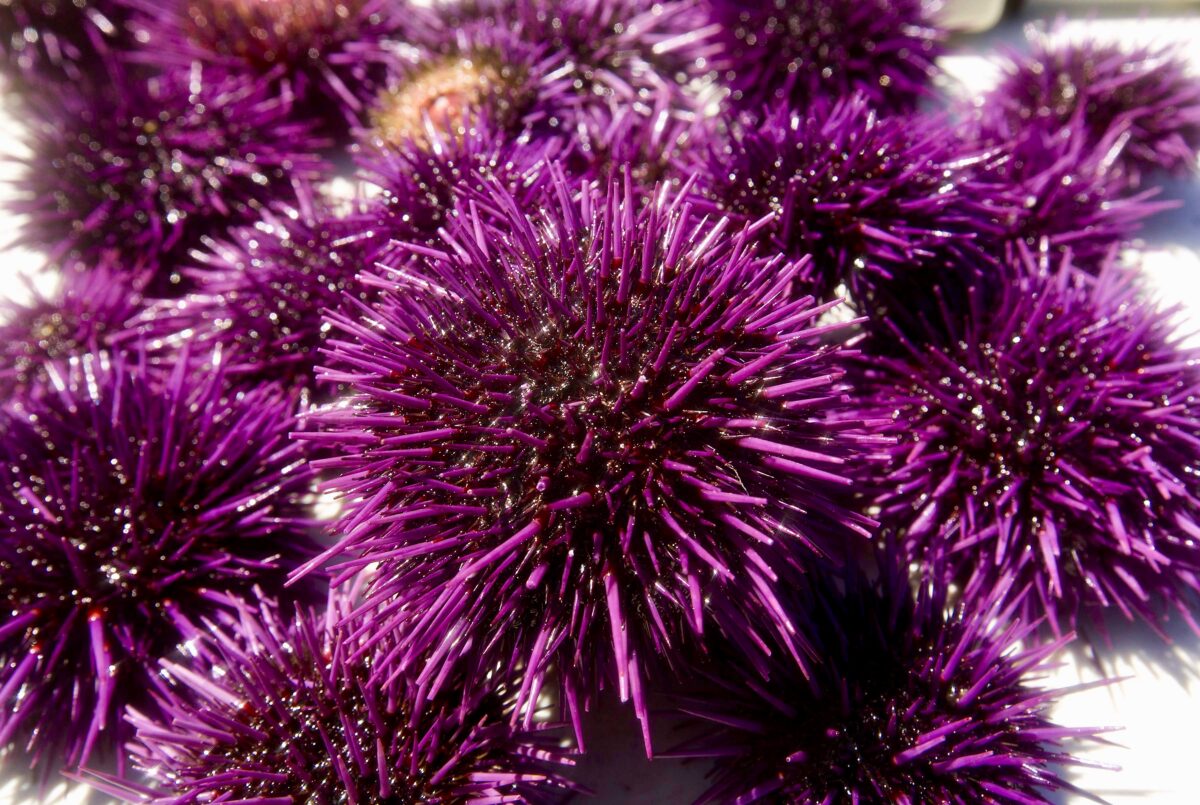A sea urchin a study in contradictions: Tenacious and spiky on the outside, vulnerable and velvety on the inside. With a beauty both fragile and fierce, it can burrow for decades into rock, but die from the tiniest crack in its brittle shell.
As an ingredient, sea urchin is a flavor bomb that’s sweet and briny, custardy and ambrosial, summoning the taste of both earth and sea in every bite.
If you’re like some people, a glance at a jiggly orange blob of sea urchin roe, or uni, might be enough to prompt a hasty “no thanks.” But fresh, local sea urchin, abundant in the ocean along the North Coast, has captured the fancy of coastal chefs, and it’s increasingly finding its way onto menus. Local uni is an umami delicacy on par with caviar — with an environmental backstory that people can feel good about.
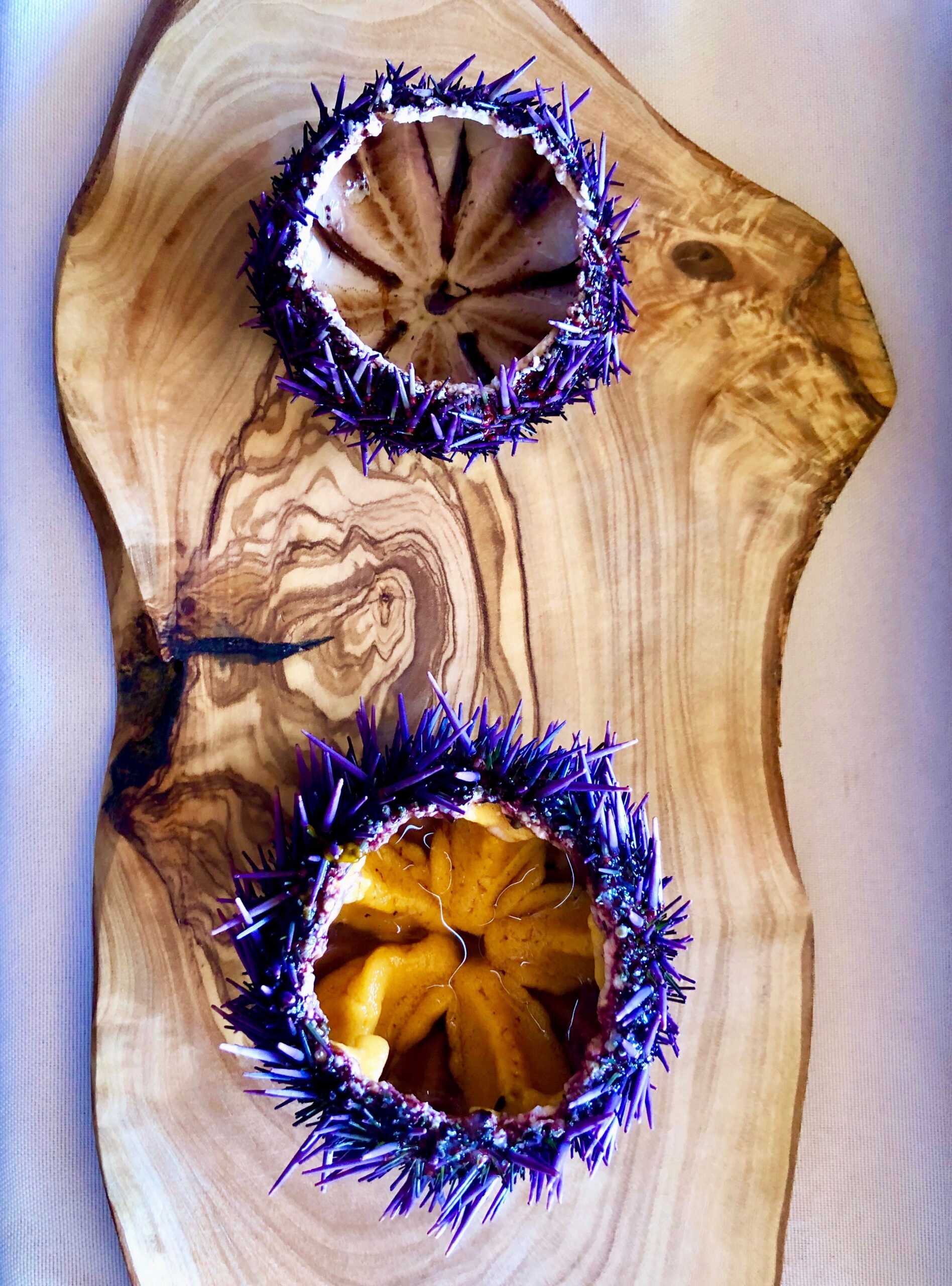
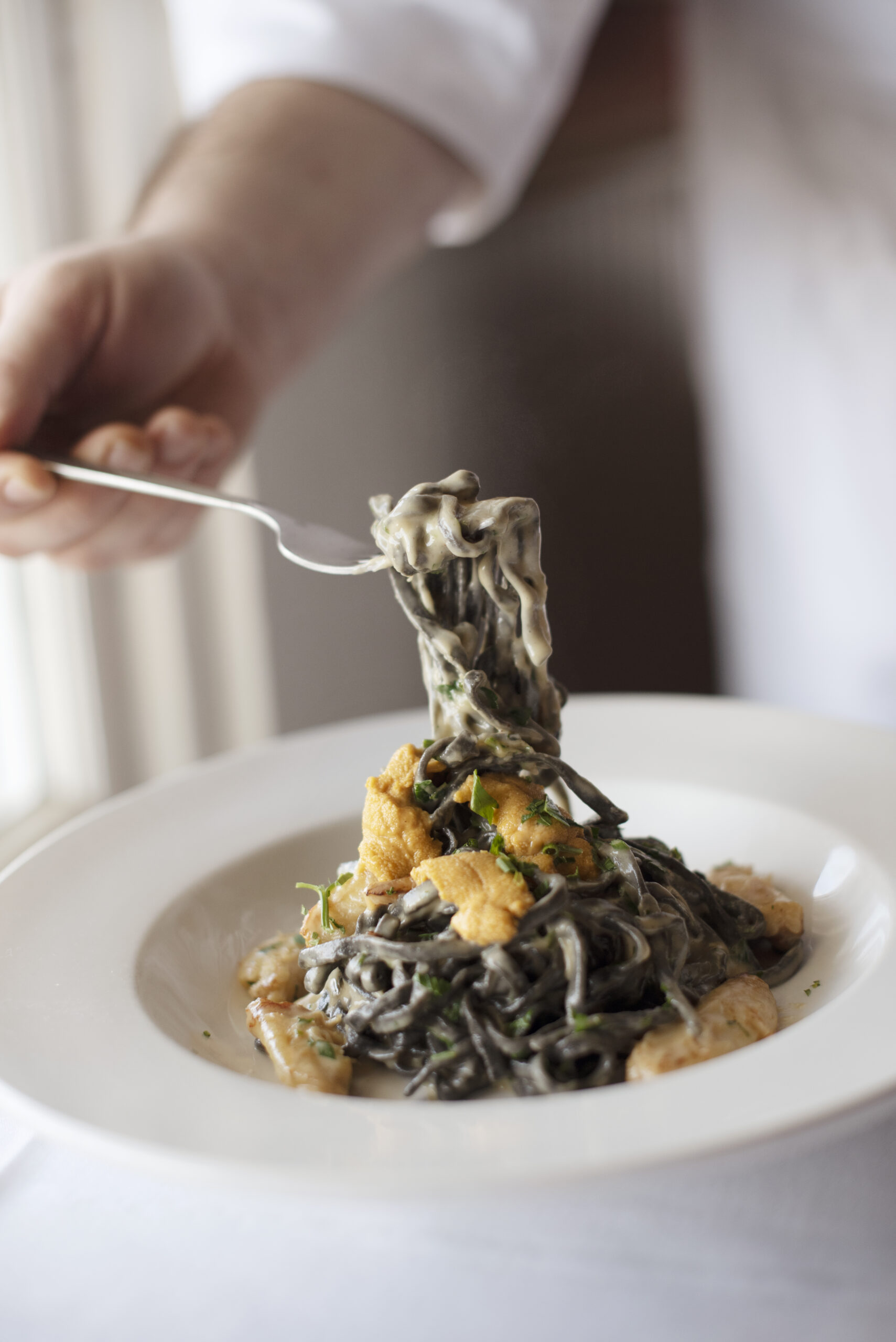
Jason Azevedo, chef de cuisine at the Little River Inn on the Mendocino Coast remembers his first taste of uni in his 20s.
“It was at a sushi restaurant, and I got the big combo platter to try anything,” he recalls. “It reminded me of foie gras in the rich sweetness, and then that melty, briny flavor — I fell in love with it.”
From there he started adding the tender lobes to his tapas dishes and garnishing paella with it. He pureed it to make a savory flan: a silken uni custard, with a layer of miso in place of the caramel base.
These days, Azevedo uses the luxurious umami flavor of uni to elevate a pasta dish (see recipe p. 52), using black squid-ink pasta draped in a golden-hued cream sauce. He forages for urchin down in the coves below the inn when he gets the chance or, he adds with a smile, “When I’m having a really bad fishing day.”
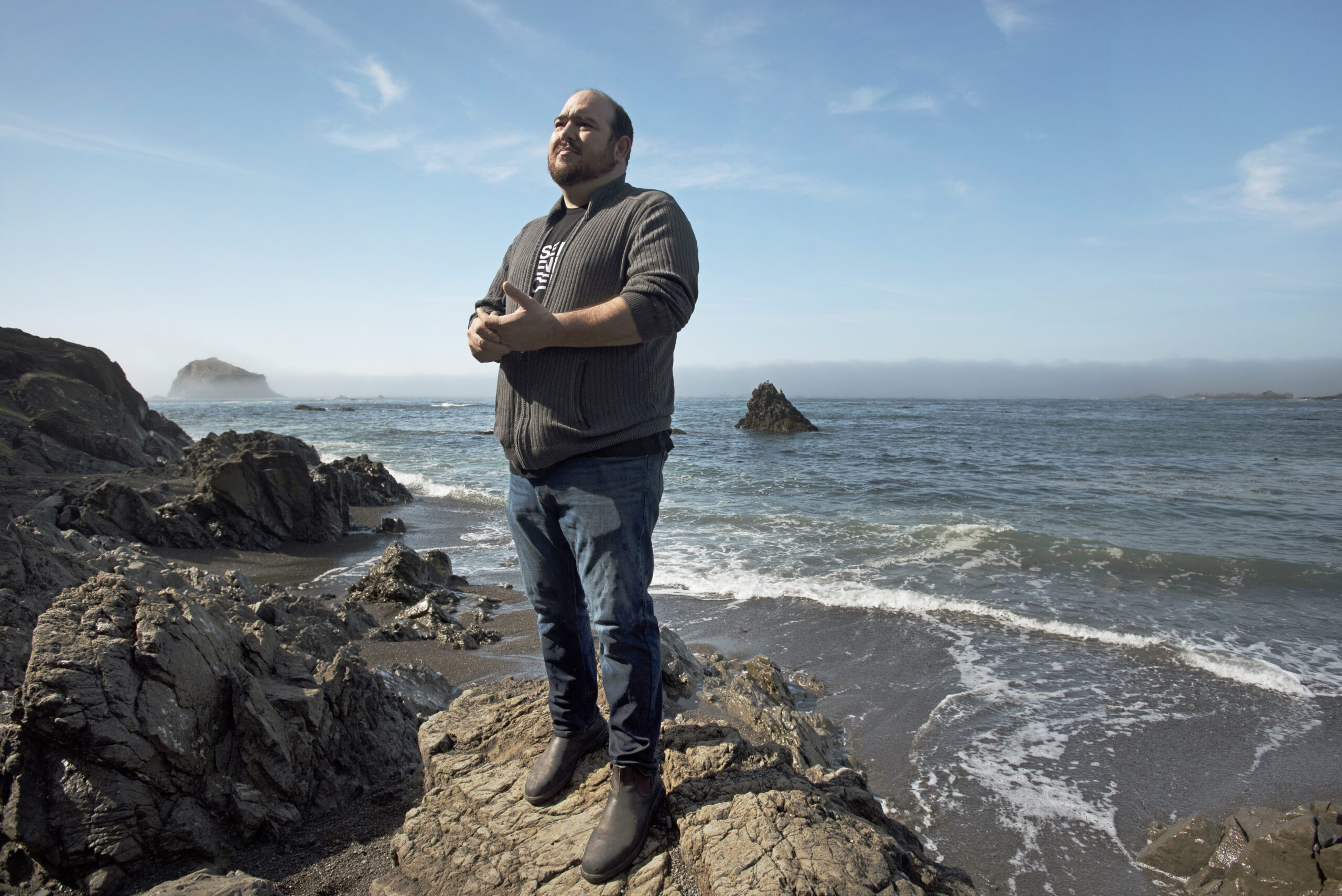
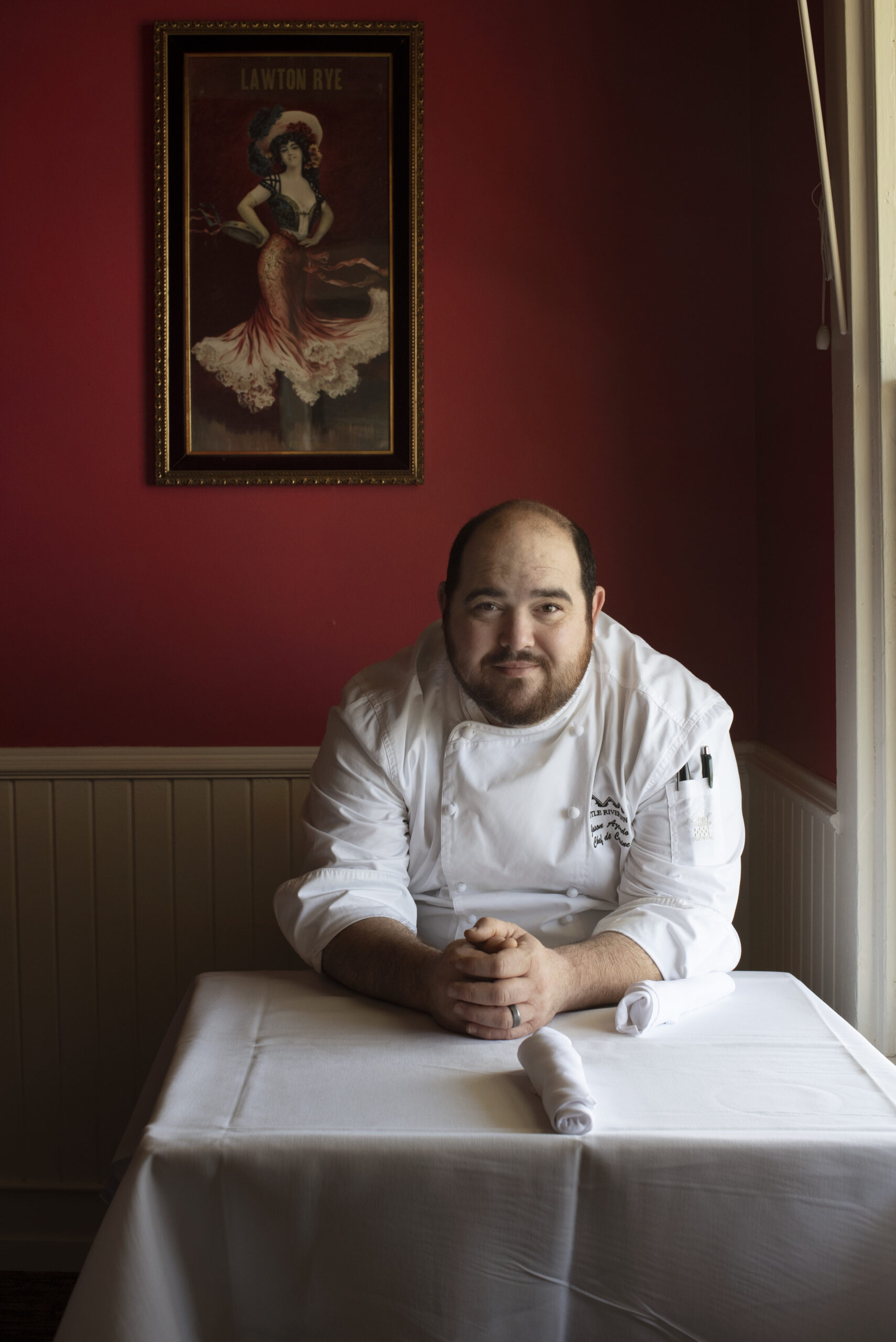
Urchins along the West Coast come in two main varieties for eating: the red urchin and the purple. Red urchin has long been favored by chefs because of year-round availability and bigger “tongues” — the five spears of roe that form the edible part of the sea urchin. These silken lobes can be a couple of inches long and an inch or more wide, with a color ranging from deep gold to vibrant orange.
The smaller, scrappier, and more populous purple urchin has snagged the spotlight in recent years as a tasty way for humans to literally take a bite out of an ecological disaster that began a decade ago, when warming seas triggered an alarmingly large algal bloom, followed by a disease called “sea star wasting syndrome” that killed off an estimated 80% of the sea stars that feed on urchins and normally keep the urchin population in check.
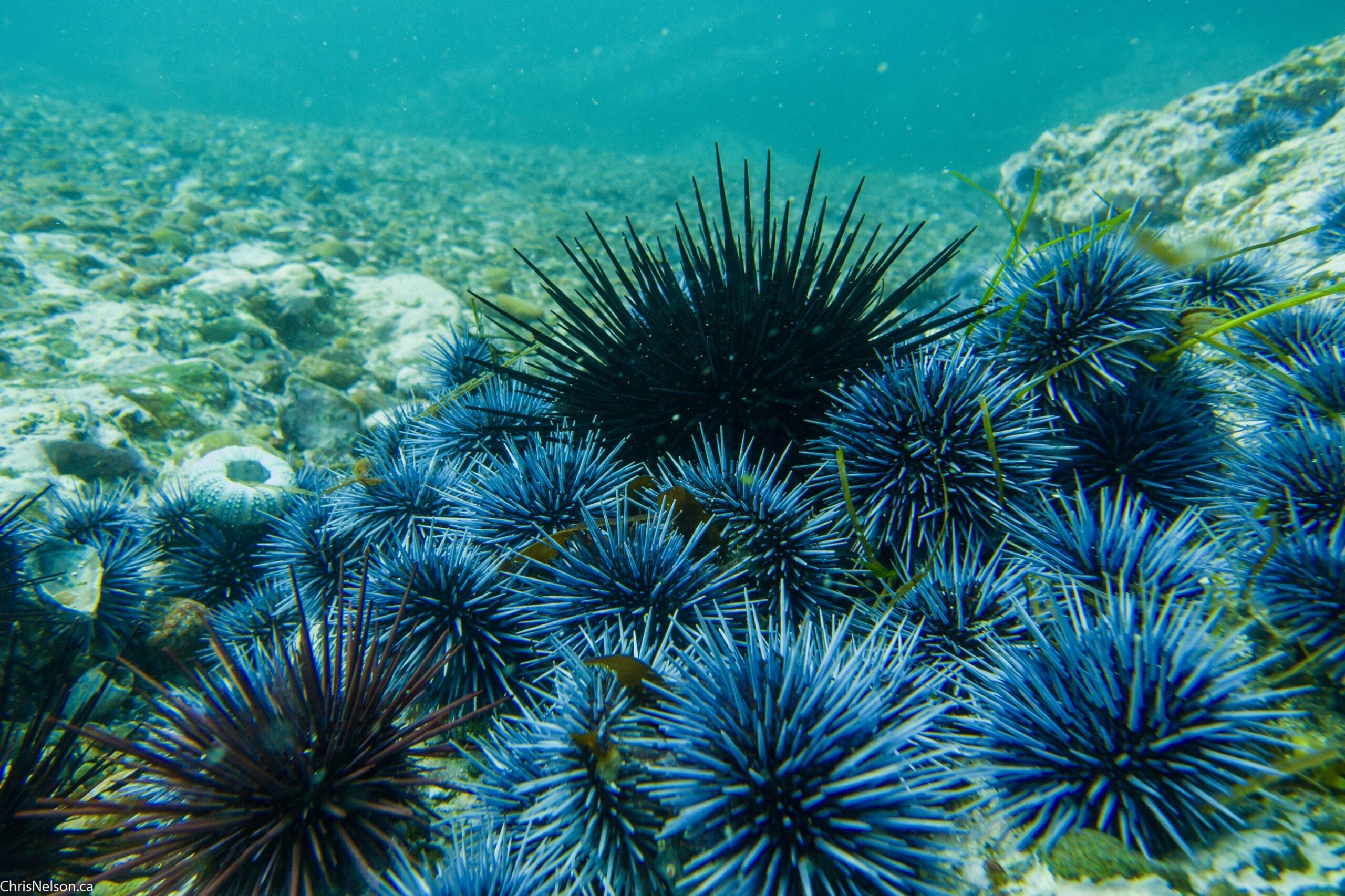
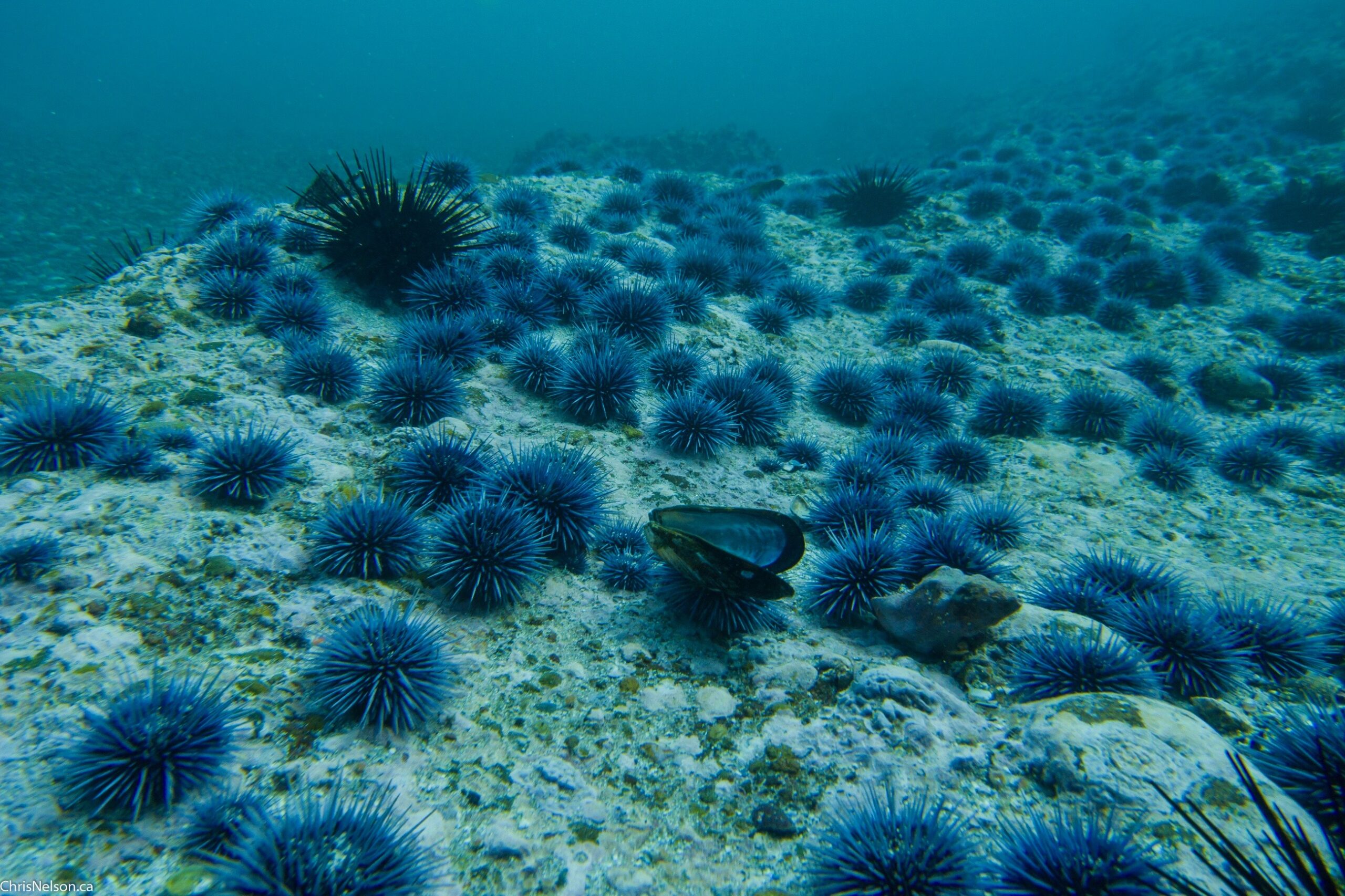
Like abalone, sea urchins feed on bull kelp that grows in undersea forests supporting a range of sea life. However, from 2014 to 2016, warmer sea waters that scientists nicknamed the “Pacific warm blob” inhibited regrowth of those kelp forests. As luck would have it, purple urchins can survive on nothing but rock and algae for decades, earning them the nickname “zombie urchins.”
Within a few years of the purple urchins’ population explosion, not only were abalone starving to death, forcing the closure of the abalone fishery in 2018, but many of the West Coast’s once-lush underwater bull kelp forests had been reduced to “urchin barrens” — spiky carpets of purple urchins covering miles of ocean floor.
On a drizzly Saturday morning at Caspar Cove in Fort Bragg, while others are still asleep, Josh Russo has already been in and out of the ocean, culling as many purple urchins as he can find in a targeted section of the cove. “It’s perfect out there,” he says of the day’s dive, noting 15 feet of visibility underwater and some promising areas of regrowing bull kelp, visible from shore as dark floating orbs. As the lead organizer for the North Bay chapter of the Watermen’s Alliance, Russo rallies groups of diving volunteers to harvest overpopulated purple urchins from selected areas, giving the bull kelp a chance to thrive again.
Russo serves on the California Department of Fish and Wildlife’s Marine Protected Areas group, where he successfully lobbied this year for bigger limits on individual harvests of purple urchin — up to 40 gallons per person — and more aggressive culling methods at Caspar Cove.
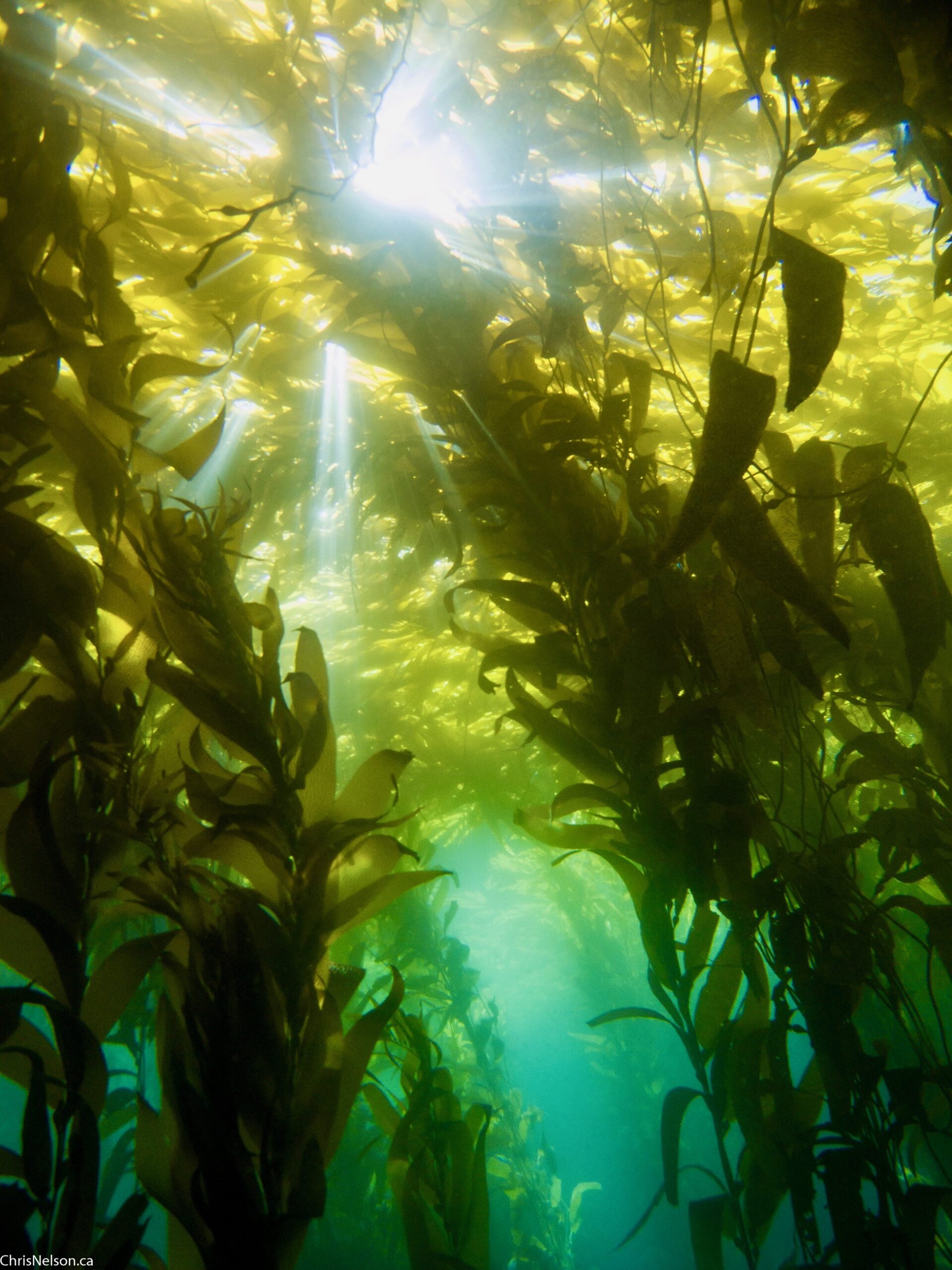
Russo shows a bag of urchins he collected on the morning’s dive, their spikes moving slightly in the morning rain, headed for the kitchen at Little River Inn. “We also have to remember the purple urchin are not an invasive species; they’re a native species,” he says. “They’re not the enemy; they’re just overpopulated right now. Our effort is to restore the balance.”
Cally Dym, the fifth-generation owner of the Little River Inn and restaurant has been foraging on the beach her family once owned, now known as Van Damme State Park, since she can remember. Back then, abalone was the prize, part of a thriving ecosystem that brought thousands of tourists to the Mendocino Coast each year to dive and dine.
While Dym, like others on the North Coast, longs for the day when the abalone fishing returns (Fish and Wildlife has set 2026 as the date for releasing its plans for the fishery), uni has been an interesting side trip. While she calls urchin an “acquired taste,” it’s one that her husband Marc likes, and she’ll grab him some when she’s out “rock-picking” the tidepools at a very low tide.
Down Highway 1 from Little River, in the town of Elk, the back dining terrace of Harbor House Inn overlooks a sunny cove, a view that tempts Executive Chef Matthew Kammerer out of the kitchen. “Honestly, I like any excuse to get outside,” the Michelin-starred chef says with a grin, and fetching purple urchin at a low tide is as good a reason as any. “This is a rare place,” he says. “That’s why I chose it. It still feels raw and untouched.”
“A lot of our guests have their first uni experience here,” he said. “In a restaurant like this, it’s about language and the mindset you put guests in before they eat something. So, if you’re excited about it, they’re excited about it.”
Kammerer’s urchin-based creations include a savory Japanese-style uni custard or chawan-mushi and a dish of warm celery root and cool uni that has guests raving. The backstory of the sea urchin takes some time to explain at the table, but Kammerer believes it’s worth it.
“We see it as our job to get people asking more questions about where their food comes from and about the need to go local to sustain economies and the natural world,” Kammerer says. Depending on the season, he sometimes uses red urchin purchased from local fishermen, but admits the purples are more desirable from a local and sustainability standpoint. “You can find like 50 in five minutes,” he says of gathering the plentiful purples from tidepools in the cove below the restaurant. The meatier ones, he says, will be the ones feeding near the seaweed.
Both chefs Kammerer and Azevedo mention that the key to good uni is freshness and proper handling. Cleaning an urchin is a matter of cutting a circle around the bony plates on the bottom of the urchin that form its mouth (kitchen shears work nicely).
Once the mouth is removed, the urchin can be gently rinsed out with sea water. This will reveal the five points of roe, sometimes called tongues, that sit on the inside of the urchin’s shell like the petals of a flower.
In Europe and Japan, urchin is often served this way, on the half shell, so diners can scoop it out with a spoon. Live, whole urchins can keep in the refrigerator in seawater for 24 hours, but not much longer. Cleaned and in the half-shell, they can keep for a couple of days on ice.
If you forage at a minus tide, or attend one of the Watermen’s Alliance urchin dives, you should expect that only 5-10% of urchins will yield a decent amount of the sought-after roe, so take more urchin than you need, keep them in seawater, and be prepared to smash up the ones you don’t use and put them in your compost bin. Urchin can also be ordered in advance online from purveyors or ordered from a favorite fishmonger or market.
To address the problem of purples not yielding enough roe, a global company called Urchinomics hopes to start “ranching” sea urchins, by harvesting them from barrens and fattening them up for 6-12 weeks on a special non-bull kelp seaweed diet, then selling them to restaurants in places with high demand. Urchinomics conducted successful tests of the program in Bodega Bay last year, and, according to the company, expects to open a ranching site in Southern California in the next year. Finding the right site and working with regulators takes years, but the company is optimistic that the North Coast region will one day have its own purple urchin ranch that keeps the population in check, while filling a growing demand for the roe.
Meanwhile, some locals on the coast are feeling hopeful this year about the fact that cooler summer temperatures and windier days drew an upwelling of kelp-friendly cold water into the urchin-dotted bays, with promising stands of bull kelp visible right off shore.
Dym, who goes to a place she calls “my beach” whenever she can, said she saw a good amount of young abalone among the colorful tidepool life on a recent excursion. She shared a photo of a bright and perfectly formed young sea star, a key urchin predator, that she found on the rocks at low ride. “We still have a long way to go,” she said of the once-vibrant fishery with an uncertain future, “But seeing this, it made my day.”
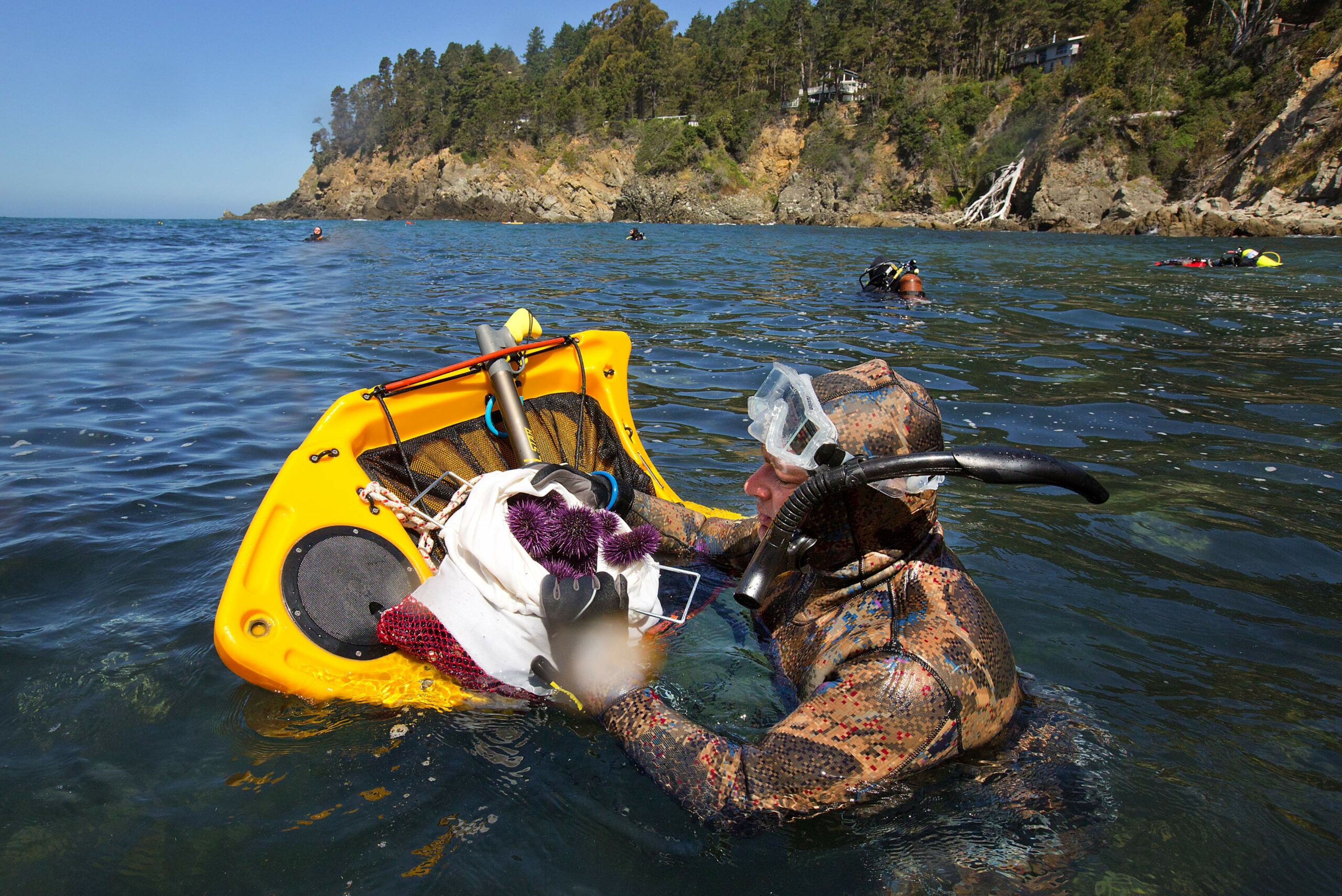
How to get your (gloved) hands on some sea urchin
• Go on a volunteer “Purple Urchin Removal” Day with Josh Russo and Watermen’s Alliance, announced on their Facebook page (facebook.com/ groups/158992911481142/about) The group welcomes volunteers, and there are thousands of purple urchins available for the taking this season.
• Rock-pick your own purple urchins from the tidepools at Van Damme or Caspar Cove at a very low, minus tide. Practice ocean safety: Go with a group, wear sturdy water shoes and gloves, and never turn your back on the ocean. The North Coast is famous for sneaker waves. You’ll also need to have a current fishing license.
• Order online from a purveyor like Water2Table Fish Co. (water2table.com/direct-to-consumer) or SeaStephanieFish (seastephaniefish.com) that brings urchin to the Bay Area with pop-up events and sales. Uni sells out quickly, so plan ahead.
• Ask your favorite fishmonger or supermarket to order uni for you from their supplier.
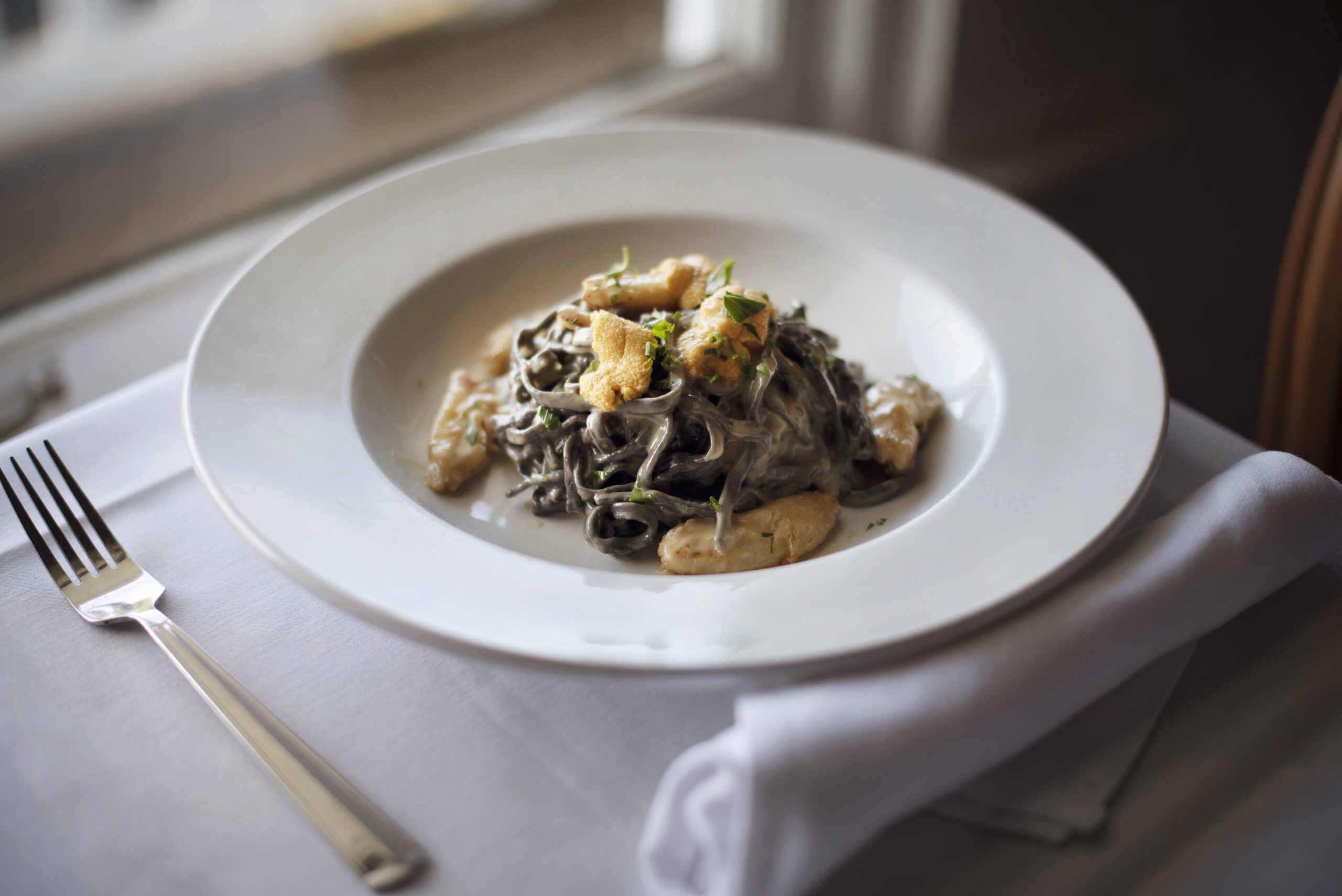
Squid-Ink Pasta with Uni Sauce
This uni recipe comes from Jason Azevedo of the Little River Inn, who prefers to make his own squid-ink pasta. Home chefs can buy the pasta at well-stocked markets or order it online. Creamy and luxurious, this is a satisfying dish for a winter evening.
For the uni sauce:
½ cup yellow onion, finely diced
¼ cup leeks, finely diced
¼ cup celery, finely diced
1 cube unsalted butter
1 tbsp salt, or less, to taste
½ cup all-purpose flour
¼ cup heavy cream
1 ¼ cup fish stock (or bouillon)
1 tsp Old Bay Seasoning
½ cup uni or 10-15 “tongues”
1 lemon, zest and juice
In a saucepan, melt the butter and sauté the onion, leeks, celery, and lemon zest on medium-low heat for 10-15 minutes until ingredients are translucent but not browned. Add salt, Old Bay Seasoning, and flour, and cook for four minutes until a smooth, bubbly paste forms. Add uni ‘tongues,’ lemon juice, fish stock, and cream, and stir with a whisk until smooth. Simmer gently for 10 minutes until creamy. Taste for seasoning, and add more Old Bay or salt as desired.
Place sauce in a blender or use an immersion blender in the pan, and whirl until pureed. Strain sauce through fine mesh, and set aside.
For the pasta dish and garnish:
1 lb. pasta sepia (squid-ink pasta, available in gourmet markets and online)
2 tbsp butter
1 cup Dungeness crabmeat, cleaned and divided in half
2 tbsp dry white wine
2 tbsp chives
Uni for garnish (if you have extras)
In a separate pan, boil pasta and cook as directed on package. Do not overcook; pasta should be al dente — approximately 7-10 minutes. While pasta cooks, melt the butter, and sauté ½ cup Dungeness crabmeat in a large skillet until lightly caramelized (the other ½ cup of crabmeat will remain cold for the garnish). Deglaze the pan with a splash of dry white wine, and reduce the liquid on medium-low heat until there is almost no liquid left in the pan. Add 2 cups of the uni sauce, and 2 tbsp of the water the pasta was cooked in. Stir to blend. Add in the cooked pasta, and gently fold together with a wooden spoon, just until coated. Allow to bubble gently on low heat for 2 minutes.
Plate the pasta and garnish with the remaining half-cup of chilled crabmeat, a sprinkle of chives, and some extra uni, if you have it. Serves 2-4, depending on whether it’s a main course or a side dish.


